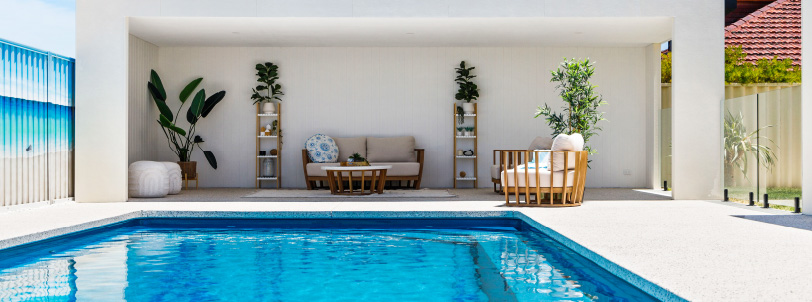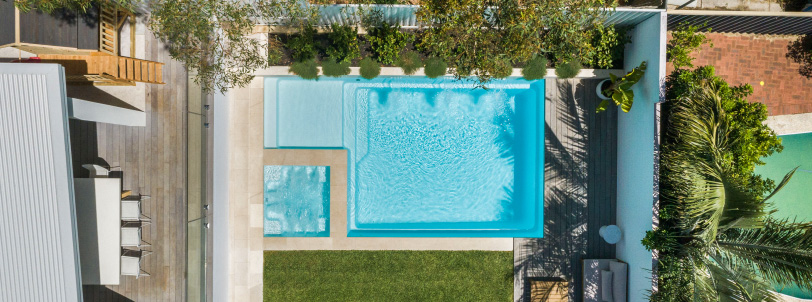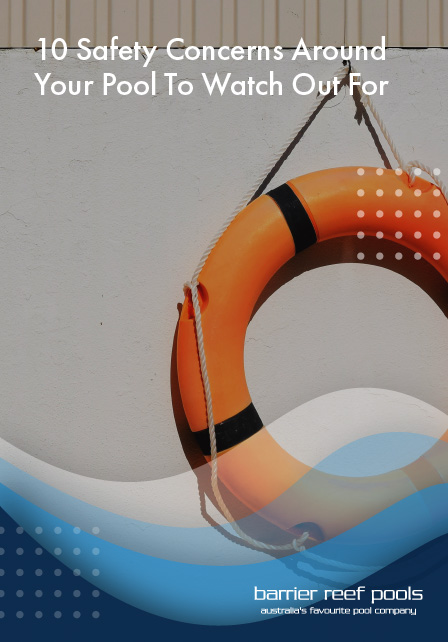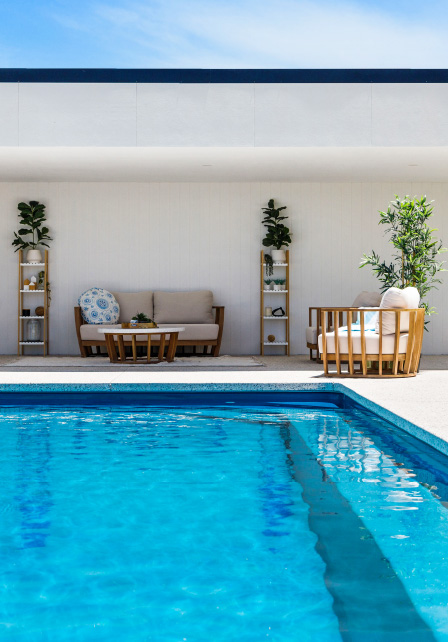10 Safety Concerns Around Your Pool To Watch Out For
Owning a pool offers endless enjoyment and relaxation, but it also comes with a responsibility to ensure the safety of everyone who uses it. Pool safety is paramount to preventing accidents and injuries, making it essential to be aware of potential hazards. In this blog post, we will explore ten safety concerns around your pool that you need to watch out for and provide practical tips on how to address them. By the end, you'll have a comprehensive understanding of how to maintain a safe pool environment for everyone to enjoy.

Common Safety Concerns in and Around the Pool
1. Drowning Risks
Drowning is one of the most significant safety concerns around a pool. It can happen quickly and silently, often without any visible struggle, making it crucial to stay vigilant at all times. Children are particularly vulnerable due to their lack of swimming skills and awareness, but anyone can be at risk if proper precautions aren’t taken. Measures such as installing pool fences, supervision, learning CPR, and providing swimming lessons can greatly reduce the risk of drowning and ensure a safer environment for everyone. It is essential to create a culture of water safety to prevent these tragic incidents.
2. Slippery Surfaces
The area around a pool can become slippery due to water splashes, increasing the risk of slips and falls. This hazard is particularly pronounced in busy pool environments where children and adults are frequently entering and exiting the water. Slips and falls in these conditions can lead to serious injuries, including fractures, head trauma, and even long-term disabilities. Proper safety measures, such as non-slip surfaces and vigilant supervision, are essential to prevent such accidents and ensure a safe swimming experience for everyone.
3. Electrical Hazards
Pools often have electrical equipment such as pumps, lights, and heaters. Faulty or improperly installed electrical systems can pose a risk of electrocution, making it essential to ensure all electrical components meet safety standards.
4. Chemical Exposure
Pool chemicals are necessary for maintaining water quality, ensuring that the water remains clean, clear, and safe for swimming. However, they can be hazardous if not handled or stored correctly. Exposure to pool chemicals can cause skin irritations, respiratory issues, and other health problems. It is crucial to read the labels carefully and follow the safety instructions when using these chemicals. Additionally, proper storage is essential to prevent accidental spills or leaks that could pose a risk to both humans and pets.
5. Entrapment Hazards
Pool drains and suction outlets can pose entrapment hazards, particularly for children. Getting trapped by the suction of a pool drain can lead to serious injuries or even drowning.

Addressing and Preventing Each Safety Concern
Drowning Risks
- Supervision: Always supervise children and inexperienced swimmers when they are in or around the pool.
- Barriers: Install barriers such as pool fences, self-closing gates, and pool covers to restrict access when the pool is not in use.
- Alarms: Use pool alarms to alert you if someone enters the pool area unexpectedly.
- Swimming Lessons: Enrol children in swimming lessons to improve their water safety skills.
Slippery Surfaces
- Non-Slip Materials: Use non-slip materials for pool decks and surrounding areas.
- Regular Cleaning: Keep the pool area clean and free of debris that can cause slippery conditions.
- Footwear: Encourage the use of pool-safe footwear to reduce the risk of slips and falls.
Electrical Hazards
- Professional Installation: Ensure all electrical components are installed by a licensed electrician.
- Regular Inspections: Conduct regular inspections of electrical systems and equipment to identify and address potential issues.
- GFCI Outlets: Use Ground Fault Circuit Interrupter (GFCI) outlets for all electrical equipment near the pool to prevent electrocution.
Chemical Exposure
- Proper Storage: Store pool chemicals in a secure, dry, and well-ventilated area away from direct sunlight.
- Personal Protective Equipment: Wear protective gear such as gloves and goggles when handling pool chemicals.
- Follow Instructions: Always follow the manufacturer’s instructions for using and storing pool chemicals.
Entrapment Hazards
- Drain Covers: Install anti-entrapment drain covers that comply with safety standards.
- Regular Maintenance: Regularly inspect and maintain pool drains and suction outlets to ensure they are functioning correctly.
- Safety Features: Consider installing additional safety features such as vacuum release systems that automatically stop the suction if entrapment is detected.

The Importance of Regular Pool Maintenance in Ensuring Safety
Regular pool maintenance is crucial for ensuring the safety and longevity of your pool. Proper maintenance helps to:
- Maintain Water Quality: Regularly test and balance the pool water to prevent the growth of harmful bacteria and algae.
- Detect Issues Early: Routine inspections can help identify potential safety hazards such as faulty equipment or structural damage before they become serious problems.
- Ensure Equipment Efficiency: Keeping pool equipment in good working condition ensures it operates efficiently and safely.
Tips for Creating a Safe Pool Environment for Children and Pets
For Children
- Teach Water Safety: Educate children about the importance of pool safety and the dangers of running or playing rough around the pool.
- Childproofing: Use childproof locks and barriers to prevent unsupervised access to the pool area.
- Life Jackets: Consider having life jackets or floatation devices available for young or inexperienced swimmers.
For Pets
- Pet Training: Train pets to stay away from the pool unless supervised.
- Ramps and Steps: Install ramps or steps to help pets exit the pool easily if they fall in.
- Hydration: Ensure pets have access to fresh drinking water to prevent them from drinking pool water, which can be harmful.
Conclusion
Pool safety is an ongoing responsibility that requires vigilance and proactive measures. By addressing the common safety concerns outlined in this post, pool owners can create a secure environment that minimises risks and maximises enjoyment for everyone. Regularly checking pool equipment, ensuring gates and fences are secure, and educating all pool users about safety rules are crucial steps. Additionally, having a proper emergency plan in place can make a significant difference in preventing accidents.
Remember, the key to a safe pool is regular maintenance, proper education, and the implementation of effective safety measures. Prioritising these aspects, along with staying informed about the latest safety practices and guidelines, will ensure your pool remains a safe and enjoyable haven for all.
10 Safety Concerns Around Your Pool To Watch Out For
Owning a pool offers endless enjoyment and relaxation, but it also comes with a responsibility to ensure the safety of everyone who uses it. Pool safety is paramount to preventing accidents and injuries, making it essential to be aware of potential hazards. In this blog post, we will explore ten safety concerns around your pool that you need to watch out for and provide practical tips on how to address them. By the end, you'll have a comprehensive understanding of how to maintain a safe pool environment for everyone to enjoy.

Common Safety Concerns in and Around the Pool
1. Drowning Risks
Drowning is one of the most significant safety concerns around a pool. It can happen quickly and silently, often without any visible struggle, making it crucial to stay vigilant at all times. Children are particularly vulnerable due to their lack of swimming skills and awareness, but anyone can be at risk if proper precautions aren’t taken. Measures such as installing pool fences, supervision, learning CPR, and providing swimming lessons can greatly reduce the risk of drowning and ensure a safer environment for everyone. It is essential to create a culture of water safety to prevent these tragic incidents.
2. Slippery Surfaces
The area around a pool can become slippery due to water splashes, increasing the risk of slips and falls. This hazard is particularly pronounced in busy pool environments where children and adults are frequently entering and exiting the water. Slips and falls in these conditions can lead to serious injuries, including fractures, head trauma, and even long-term disabilities. Proper safety measures, such as non-slip surfaces and vigilant supervision, are essential to prevent such accidents and ensure a safe swimming experience for everyone.
3. Electrical Hazards
Pools often have electrical equipment such as pumps, lights, and heaters. Faulty or improperly installed electrical systems can pose a risk of electrocution, making it essential to ensure all electrical components meet safety standards.
4. Chemical Exposure
Pool chemicals are necessary for maintaining water quality, ensuring that the water remains clean, clear, and safe for swimming. However, they can be hazardous if not handled or stored correctly. Exposure to pool chemicals can cause skin irritations, respiratory issues, and other health problems. It is crucial to read the labels carefully and follow the safety instructions when using these chemicals. Additionally, proper storage is essential to prevent accidental spills or leaks that could pose a risk to both humans and pets.
5. Entrapment Hazards
Pool drains and suction outlets can pose entrapment hazards, particularly for children. Getting trapped by the suction of a pool drain can lead to serious injuries or even drowning.

Addressing and Preventing Each Safety Concern
Drowning Risks
- Supervision: Always supervise children and inexperienced swimmers when they are in or around the pool.
- Barriers: Install barriers such as pool fences, self-closing gates, and pool covers to restrict access when the pool is not in use.
- Alarms: Use pool alarms to alert you if someone enters the pool area unexpectedly.
- Swimming Lessons: Enrol children in swimming lessons to improve their water safety skills.
Slippery Surfaces
- Non-Slip Materials: Use non-slip materials for pool decks and surrounding areas.
- Regular Cleaning: Keep the pool area clean and free of debris that can cause slippery conditions.
- Footwear: Encourage the use of pool-safe footwear to reduce the risk of slips and falls.
Electrical Hazards
- Professional Installation: Ensure all electrical components are installed by a licensed electrician.
- Regular Inspections: Conduct regular inspections of electrical systems and equipment to identify and address potential issues.
- GFCI Outlets: Use Ground Fault Circuit Interrupter (GFCI) outlets for all electrical equipment near the pool to prevent electrocution.
Chemical Exposure
- Proper Storage: Store pool chemicals in a secure, dry, and well-ventilated area away from direct sunlight.
- Personal Protective Equipment: Wear protective gear such as gloves and goggles when handling pool chemicals.
- Follow Instructions: Always follow the manufacturer’s instructions for using and storing pool chemicals.
Entrapment Hazards
- Drain Covers: Install anti-entrapment drain covers that comply with safety standards.
- Regular Maintenance: Regularly inspect and maintain pool drains and suction outlets to ensure they are functioning correctly.
- Safety Features: Consider installing additional safety features such as vacuum release systems that automatically stop the suction if entrapment is detected.

The Importance of Regular Pool Maintenance in Ensuring Safety
Regular pool maintenance is crucial for ensuring the safety and longevity of your pool. Proper maintenance helps to:
- Maintain Water Quality: Regularly test and balance the pool water to prevent the growth of harmful bacteria and algae.
- Detect Issues Early: Routine inspections can help identify potential safety hazards such as faulty equipment or structural damage before they become serious problems.
- Ensure Equipment Efficiency: Keeping pool equipment in good working condition ensures it operates efficiently and safely.
Tips for Creating a Safe Pool Environment for Children and Pets
For Children
- Teach Water Safety: Educate children about the importance of pool safety and the dangers of running or playing rough around the pool.
- Childproofing: Use childproof locks and barriers to prevent unsupervised access to the pool area.
- Life Jackets: Consider having life jackets or floatation devices available for young or inexperienced swimmers.
For Pets
- Pet Training: Train pets to stay away from the pool unless supervised.
- Ramps and Steps: Install ramps or steps to help pets exit the pool easily if they fall in.
- Hydration: Ensure pets have access to fresh drinking water to prevent them from drinking pool water, which can be harmful.
Conclusion
Pool safety is an ongoing responsibility that requires vigilance and proactive measures. By addressing the common safety concerns outlined in this post, pool owners can create a secure environment that minimises risks and maximises enjoyment for everyone. Regularly checking pool equipment, ensuring gates and fences are secure, and educating all pool users about safety rules are crucial steps. Additionally, having a proper emergency plan in place can make a significant difference in preventing accidents.
Remember, the key to a safe pool is regular maintenance, proper education, and the implementation of effective safety measures. Prioritising these aspects, along with staying informed about the latest safety practices and guidelines, will ensure your pool remains a safe and enjoyable haven for all.


